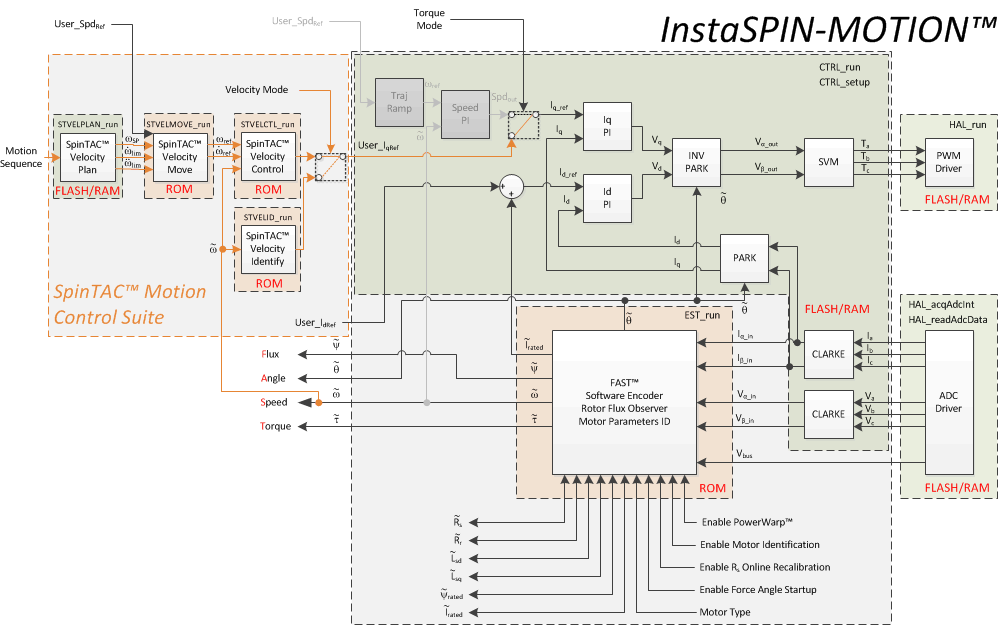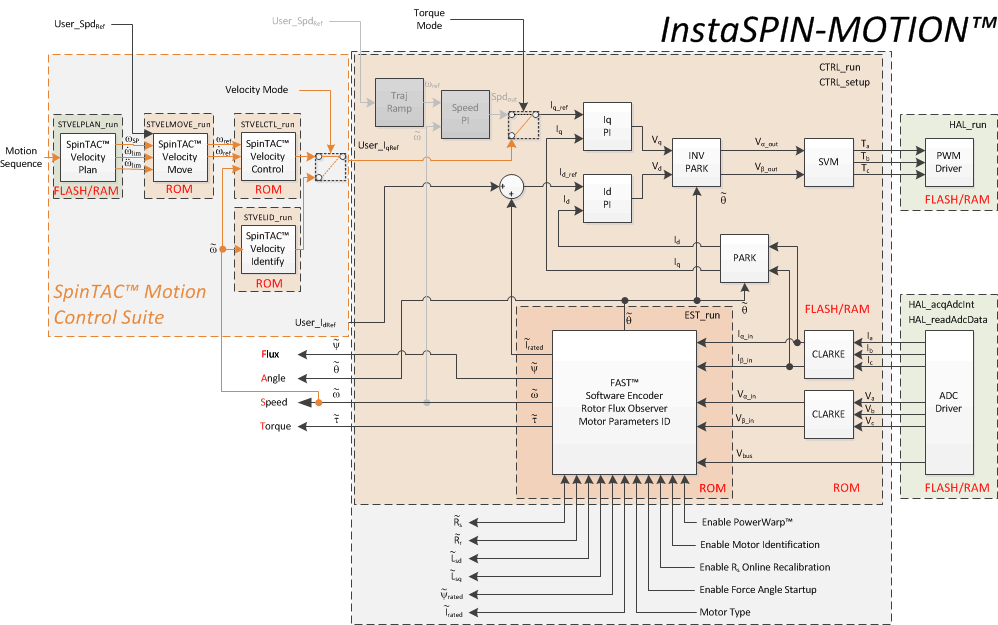SPRUHJ0C April 2013 – October 2021 TMS320F28068M , TMS320F28069-Q1 , TMS320F28069M , TMS320F28069M-Q1
Scenario 1: InstaSPIN-MOTION Speed Control with FAST Software Encoder
In this scenario (see Figure 4-1 and Figure 4-2), SpinTAC Velocity Control receives the speed estimate from the FAST estimator and generates the torque reference signal. This works with InstaSPIN-FOC in user memory (see Figure 4-1) or in ROM (see Figure 4-2). The SpinTAC Motion Control Suite provides the motion sequence state machine, generates the reference trajectory and controls the system speed.
 Figure 3-1 InstaSPIN-MOTION in User Memory, with Exception of FAST and SpinTAC in
ROM
Figure 3-1 InstaSPIN-MOTION in User Memory, with Exception of FAST and SpinTAC in
ROM Figure 3-2 InstaSPIN-MOTION in ROM
Figure 3-2 InstaSPIN-MOTION in ROM